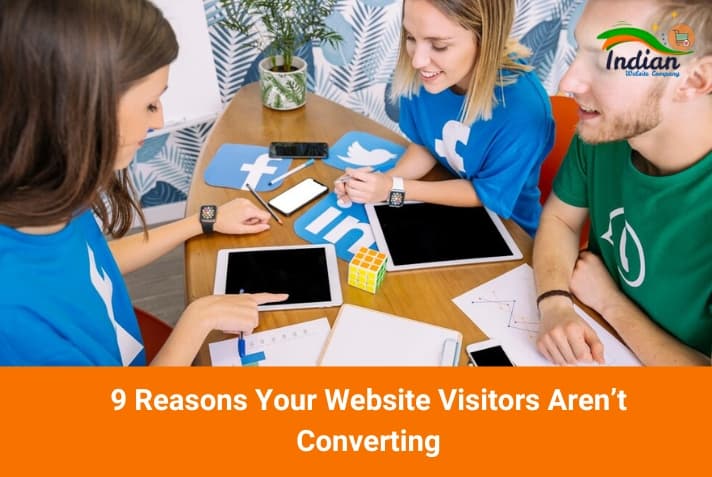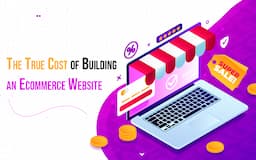9 Reasons Your Website Visitors Aren’t Converting

You want fans to do certain activities on your website, such as signing up for your email list, giving, enrolling for an event, or volunteering. And website conversion rates show how many people engage with a website by taking the most desirable actions.
These are probably the reasons you have a website in the first place – to engage your community and get them involved in your cause. But what if visitors don't convert because your conversion rates are low?
Identifying and fixing the source of a low conversion rate encourages more users to take action on your website and interact with your cause in meaningful ways.
What Are the Causes of a Low Conversion Rate?
It's an excellent question. Every organization is unique, with its own website, target audience, and desired activities for visitors. However, there is data available to assist put your organization in context with others in the nonprofit sector.
According to the M+R Benchmarks research, the average online conversion rate for nonprofits is only 1%. So, across all nonprofit websites, 99 percent of visitors abandon ship before completing a significant activity. If that sounds all too familiar, and your conversion rate is less than 1%, focusing on boosting this critical indicator can have a significant influence on your objectives.
Check your website conversion rates with a measurement tool like Google Analytics to see where you stand. Even if your conversion rates are higher than 1% or you don't have the right tracking in place to identify your exact percentage, optimizing for conversions never hurts.
Why are my visitors not converting?
If your website's conversion rates are low, one of these typical difficulties could be the fault. We'll look at six common problems we encounter on nonprofit websites, as well as solutions to each one.
1. Visitors are unable to locate the actions.
Keep your action pages visible! Visitors to your website will not take the next steps if the actions you want them to perform are difficult to find. Put yourself in the shoes of a member of your company's community. Can you locate the information you need on the website? Are you feeling motivated to take the following step (a desired action)?
It's all too typical to see websites without action items in the navigation, yet it's a lot to expect users to browse your site before taking action. Then there are users who browse your site for an entire page before leaving without being asked to do anything.
How to Repair It
Create a logical, easy-to-navigate website structure that prioritizes action. For many organizations, this can mean include a "Become Involved" section in the main menu with all of the options to get involved plainly highlighted for everyone to see and do.
Secondary navigations, which usually show above the primary navigation in the website header, are also a perfect area to emphasize action pages like Donate or Contact Us, making them even more discoverable.
Additional page-level modifications can be implemented to attract users to take the next step after engaging with content on a single page of your website. Every page should have one strong call to action that makes it clear what you want visitors to do next.
2. There is no pressing need.
Did you realize that the majority of individuals who leave your landing page will never return? In essence, it will be their last time visiting your landing page.
Many people do not return because they do not feel compelled to do so. Your landing page lacks urgency; there's nothing to entice them to return, thus they're unlikely to.
How to Fix It: Create a sense of urgency among visitors.
Give your target audience a deadline to create urgency if you want to motivate them. To make this persuasive strategy succeed, you must give visitors a reason to act now rather than later.
You can use the following techniques to make your landing pages more urgent:
Use countdown timers to show how much time is left before your offer expires. Recent sales alerts: Use sales notifications to show how many customers have recently made a purchase.
Remind visitors to act within a particular amount of time to obtain your offer. Tell users that there are only a few things remaining in stock.
3. Uninspiring call to action
If your lead generation attempts are failing, it's possible that your call-to-action (CTA) or CTA button isn't forceful enough. The majority of CTAs are imprecise and do not compel visitors to take action, such as:
Register Now
Purchase Now Submit
The problem with the CTA examples above is that they don't tell users what to expect once they click. Would you give up your personal information if you had no idea what you'd get?
How to Correct It: Make your call to action irresistible.
Follow these CTA best practices to make your CTA difficult to ignore:
Each page should only have one offer. If you have many CTAs on one page, your visitors may be confused and may opt not to click at all.
Make your CTA stand out by using contrasting colors.
Make your CTA specific to the benefits of your offer. If you're selling an ebook, for example, don't merely write "Download Now." Instead, use compelling language like "Discover Marketing Best Practices" or "Increase Your eCommerce Conversion Rates" to show customers what they'll get.
4. There is an Overabundance of Written Content
A landing page with too much textual material is difficult to read and dull. You'll turn off your visitors if you utilize a lot of technical language.
Let's face it: you're not advertising a book; you're pushing a product or service. Make your material easy to understand and show users why they should convert with this in mind.
Fix It: Make Your Copy Simple to Read
Because most users scan web sites rather than reading every word, merely express what you need to convey and ignore the rest. Write in simple language that your target audience will comprehend.
Additionally, provide the following to make your pages easier to scan:
Sentences are shorter.
Lists with bullets
Subheaders and headings
You can also utilize videos and photos to break down complex content into smaller chunks. Users will stay on your landing page longer because videos are more interesting.
5. It's possible that your landing pages aren't fully optimized.
Calls to action aren't the only part of the conversion process "machinery" that could be causing you to lose leads.
Sure, calls to action create clicks and visits to your landing page, but what happens once those visitors get on your landing page? You risk losing those potential contacts if the pages aren't well-optimized.
What to do about it: Compare your CTA click rates to page submission rates to see if your landing pages are to blame. If there's a significant difference between the two counts (with clicks far outnumbering submissions), it's possible that your forms or landing page are to blame.
6. The action is overly complex.
When it comes to website actions, simplicity is crucial. Fewer people will take action if it feels like too much labor or takes a long time to finish. Is it really necessary to ask a visitor for their entire name when they sign up for an email list, or will a simple email address form box suffice?
Simplify the solution! Spend some time on your website performing all of the actions you're asking users to take and looking for ways to simplify things.
Online forms should have fewer form fields.
Consolidate multi-page sign-ups into a single page.
Streamline the registration and onboarding processes.
While this problem and its potential solutions can go many different paths, the most important factor to consider is simplicity of use. How can you make it easy for a website user to do this action? Make the necessary adjustments.
7. The action's completion procedure is broken or sluggish.
If the form or mechanism used to complete an action on your website is faulty, visitors will be unable to finish it. If no one has lately done actions on your website, that's a red flag that needs to be addressed.
Similarly, most visitors will not wait more than a few seconds if your website or the tool utilized for the action is slow to load. They'll be gone. I'm no stranger to abandoning web pages that take too long to load.
How to Repair It
Obviously, you'll want to make resolving any problematic parts of your website a top priority. Especially if it prevents users from performing a critical action on your website, such as filling out a form.
Also, don't overlook the importance of speed. When it comes to loading activities and pages on your website, faster is always better. Check out these Moz recommendations for speeding up your website. However, if the tool you're using is dragging things down, you'll most likely need to work with the product's support or a developer to speed things up.
8. Your message does not correspond to your advertisement.
Another reason your landing page isn't converting is that it doesn't match your original advertisement. Users will bounce off your website if the tone, design, and language of your landing page do not match the tone, design, and language of your ad.
How to Fix It: Maintain Consistency in Your Design
Carry the same theme, design, and call-to-action from your ad to your landing page to avoid message misalignment. Similar images, color schemes, headlines, and phrasing are all examples of this.
You can also tailor your landing pages to the source of your traffic. For example, for Facebook ads, you can construct a landing page suited to your Facebook audience, or for your PPC campaign, you may develop a Google Ads landing page.
9. They don't have faith in you.
If you haven't earned a visitor's confidence, they are unlikely to give you their personal or credit card information or participate with your company in any way. Building trust and credibility with your target audience takes time and effort, but there are some indicators you can provide to new visitors to your website to assist speed up the process.
How to Repair It
You can start to establish a website visitor's trust by being upfront about your work as an organization and the procedure you're asking them to complete. Concentrate on establishing your trustworthiness throughout your website.
Begin by creating an Impact page to demonstrate the results you've achieved and how you're progressing toward your mission.
Share tax documents and information about where donations go on a Financials page.
Introduce your organization's leadership to demonstrate the real people who are putting their reputations on the line for you.
Give visitors contact details so they can ask inquiries.
It's also beneficial to keep customers on your website to take action when it comes to creating trust. It might be irritating to be abruptly redirected from a website to a third-party website to perform a task that involves personal information. Imagine clicking a donation button and being taken to an off-site page that isn't branded for your organization and requests a credit card number.
Keeping an eye on your website's conversion rates is a good approach to ensure that it's performing its job. In the long term, optimizing your website for action can make your life easier by working behind the scenes to direct users to the correct spot to take action for your business.
How do I convert visitors to my website?
Do you have a low conversion rate on your website? Which frequent problem do you think is to blame? Let's explore methods to improve and boost conversions. Get in touch with us so that we can confabulate about the reasons for low conversion rate of your website. We at Indian website company, the best web design company and SEO agency in India possess the expertise and experience of over 10 years in unmatched website designing that is SEO friendly and conversion friendly.
Recent Blogs

The True Cost of Building an Ecommerce Website

10 Benefits of Having a Website for a Small Business
